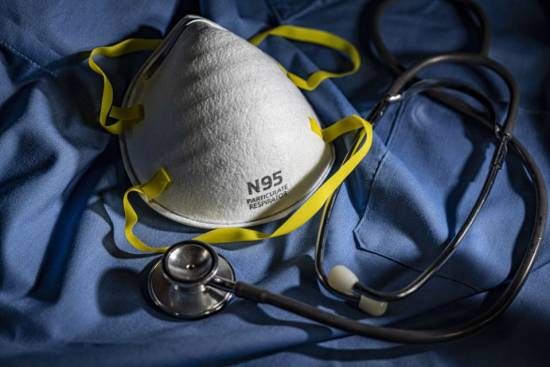A good cloth mask is a powerful weapon against the coronavirus: Study Featured
WASHINGTON — Face coverings, including masks made of cloth, are highly effective in protecting the people who wear them as well as those around them, according to a new study from Linsey Marr, a leading aerosol scientist at Virginia Tech University.
“Filtration works both ways,” Marr said. “If it works for source control,” she said during a media presentation on Monday — that is, if the mask filters out particles coming from the wearer’s mouth — “it’s going to work pretty well for exposure reduction to protect the wearer also.”
Testing 11 different types of face coverings (nine cloth masks made from coffee filters, cotton and other materials, a surgical mask and a face shield), Marr and co-author Jin Pan found that many of the materials they “challenged” with particles meant to simulate the coronavirus exhibited a 75 percent filtration capacity. A high-quality cloth mask consisting of three layers could allow filtration as high as 90 percent. Crucially, that accounts for incoming particles as well as outgoing ones.
The efficacy of surgical masks had been widely known. Their use was endorsed in a Wall Street Journal op-ed by former Food and Drug Administration head Scott Gottlieb published on Sunday evening. He encouraged people to wear N95 respirators or, failing that, surgical masks. “The level of protection depends on the type of the mask,” he wrote, cautioning people away from bandanas and other loosely-fitting face coverings.
Marr’s study suggests that cloth masks work better than some have claimed, in part because many virus-bearing particles are significantly larger than previously thought. Her study adds crucial new information about the relative benefits of cloth masks, which people find easier to wear — and more stylish — than their light-blue medical counterparts.
In particular, the study noted that a mask that contains an interior filter made from a common vacuum bag “achieved outstanding performance.”
The question of specific materials aside, the study counters the long-held misconception that masks do not protect those who wear them. Last week, some right-wing media outlets seized on a Danish study whose methodology has been criticized as slipshod and whose findings have been deemed inconclusive.
By contrast, Marr’s research involved testing different types of masks by putting them over the faces of mannequins. Those mannequins were then placed inside a plastic bin sprayed with a saline solution. Marr and her team recorded how many of those particles made it through the mask and into the mannequin’s mouth, which was fitted with a sensor.
Marr focused on particles measuring one to two microns in size. That is because the coronavirus tends to attach to larger droplets as they leave a person’s mouth or nasal passage and travel through the air. (People who work in hospitals and could face exposure to sub-micron particles do need to wear N95 respirators, so named for their 95 percent filtration capacity).
Discussing the results of her research on Monday, Marr acknowledged the skepticism about face masks. Among known mask skeptics is the president himself, who contributed to mask wearing becoming a culture war. But with coronavirus infection rates rising across the country, some Republican governors have broken with the president and endorsed mask wearing, albeit with less enthusiasm than public health officials might like.
President-elect Biden is considering implementing a national mask mandate. He has called wearing a mask “a patriotic duty.”
Resistance to masks lingers in part because the Centers for Disease Control and Prevention originally advised that people did not need to wear masks when the coronavirus first arrived stateside last February. That errant guidance reflected a misunderstanding of the devastating efficacy with which the coronavirus spreads through the air when people cough, sneeze or even talk loudly.
Later, people were told to wear masks but to protect others, not themselves. Now the growing consensus is that the wearer benefits from masking as well. Had that consensus formed earlier and had it been articulated more clearly, perhaps the resistance to masks would not be quite so intense nearly a year into a pandemic that has killed more than a quarter million Americans.
“One criticism of masks has been, ‘Oh, well, they don’t work,’” Marr said while discussing the study with members of the media on Monday afternoon. Acknowledging the Danish study, Marr said its subjects did not appear to wear masks with the kind of consistency that would have made the results persuasive. She further explained that masks were not a panacea, but rather one of several interventions intended to work in concert, including social distancing and hand washing.
President Trump has also maligned social distancing.
Marr did not include N95 respirators in her latest work. “For practical reasons, having the general public run around in N95s is a challenge because of the shortage,” Marr explained, a reference to supply chain problems that have been ameliorated but, when it comes to certain materials, are not entirely resolved.
“We recommend now based on this study that people use a three-layer mask,” she said, where “the outer two layers are a tightly woven but flexible material that allows the mask to conform to your face.” The middle layer of such a mask is a filter. A two-layer mask could also work, Marr said, provided it had a “good, tight weave.”


